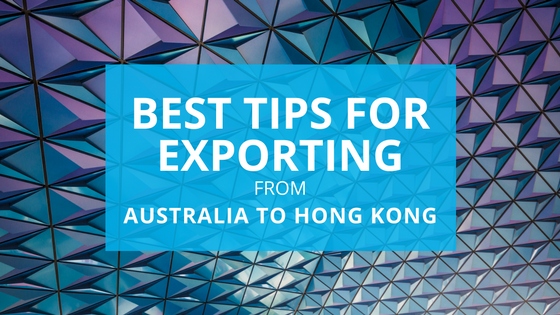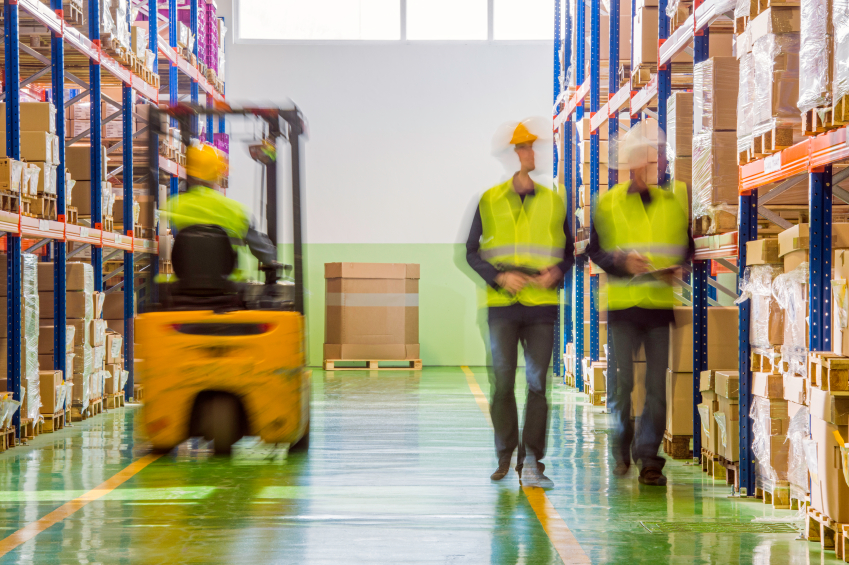Best Tips to Start Exports to Hong Kong from Australia
Exporting goods to Hong Kong is a great way to establish your brand internationally and drive revenue from sales overseas. This guide provides helpful information to prepare your business for a successful international expansion.
According to the Department of Foreign Affairs and Trade, Hong Kong is the 6th largest market of Australian exports. Major exports to Hong Kong include gold, edible products, fruit and nuts and telecom equipment.
As you start your research on exporting, it’s important to know if your business is ready for it. Our beginners’ guide to exporting from Australia is a great starting point to understand taxes, tariffs and financial assistance.
There’s also lots of fantastic advice for exporting to Hong Kong here.

In this guide we’ll cover:
- Finding the right products to export to Hong Kong.
- Understanding the types of products you can (and can’t) export.
- The best ways to export products to Hong Kong.
- Costs to export containers from Australia to Hong Kong.
- Understanding licenses for exporting to Hong Kong.
- Export and import duty, tariffs, and taxes.
- Getting paid in foreign currency.
Finding the right products to export to Hong Kong
At the end of the day, you want a successful export business and that requires your products to be sold for a profit in Hong Kong. But it can be tricky as Hong Kong has a surplus of low cost goods manufactured both locally and in China. So make sure that there is a demand for your product and that you are not competing with high supply of similar products.
- Avoid food and perishables — Food and produce are very expensive to export, since you need specialised shipping. Additionally, food exports are subject to strict criteria, so you’re best off avoiding them altogether.
- Avoid mass-produced, cheap goods — Hong Kong makes so many of these types of goods domestically, you’re never going to compete when you factor in the costs of manufacturing and logistics.
- Do your market research — Alibaba and Taobao, both enormous online marketplaces, have a huge presence in Hong Kong — You can certainly sell through these marketplaces, and they’re a good place to start when it comes to market research. Additionally, look into specialized market reports on what sells in Hong Kong.
- Aim at unique products — Ideally, you’ll want to provide “unique” items that aren’t produced domestically in Hong Kong. These can be lifestyle goods and aspirational products, often with a strong aesthetic. Think clothes, furniture, cars, electronics, accessories, and designer items.
- Understand your margins and pricing — Exporting can eat into your margins. Make sure you’ve got a rock-solid understanding of all your costs and the price you want to sell at. Then account for exchange rates to make sure you can still turn a profit.

Understanding the types of products you can and can’t export to Hong Kong
Both Australia and Hong Kong have limitations on what you can export and import.
Australia export restrictions
The Australian authorities prevent or restrict goods like some chemicals, biological materials, pharmaceuticals, animal and plant species, weapons, and more from export. You can find a complete list here. You should also learn what Australian Customs needs from you if you want to export.
Hong Kong import restrictions
Controlled imports include animals and plants, controlled chemicals, dangerous drugs, food, infectious goods, pesticides, rough diamonds, weapons and more. For the full list, refer here.
The best ways to export products to Hong Kong
Getting your products to Hong Kong isn’t a walk in a park. There’s a fair bit of work involved and it can be a time consuming process. If it’s your first time exporting to Hong Kong, it’s advisable to hire someone with experience in that area.
Here is an overview of the exportation process:
- You manufacture or purchase the items domestically, in Australia OR you manufacture them elsewhere and arrange for shipping from there to Hong Kong.
- You understand the various regulations, tariffs, and licenses you need to export.
- You arrange for international shipping from the point of origin to Hong Kong— For larger items and big quantities, you will typically use container cargo, for smaller quantities, you might use an international shipper like FedEx.
- On arrival of your goods in Hong Kong you pay the necessary duty, tariffs, and any other fees.
- You arrange for your goods to be held on your behalf in Hong Kong.
- You market your goods for sale in Hong Kong, often through a retail store, third-party marketplace, ecommerce website, or some other outlet.
- You sell your goods and arrange for them to be sent to your customers.
- You get paid and transfer your money back to Australia.
- You pay any necessary local taxes in Hong Kong and Australia.

Typical container costs — Shipping from Australia to Hong Kong
International shipping might not be as expensive as you think. According to the Sea Freight Calculator, the cost of renting a full container to ship goods from Australia to Hong Kong is approximately:
20 ft container — $1,300 USD
40 ft container — $1,700 USD
And according to Australia Trade, renting part of a container will cost you between $150 and $250 AUD per cubic meter or 1,000 kilos, whichever is greater.
Remember that these are only shipping costs — The cost of actually having your goods freighted from one port to another. They don’t include costs involved in getting your goods to a warehouse, insurance, duties, and other fees. Make sure you understand your total logistics costs so you can factor them into your pricing.
We’d advise you to compare a number of quotes from shipping companies and suppliers based on the type and quantity of goods you want to export.
Understanding licenses for exporting to Hong Kong
The type of documents you need to clear Hong Kong customs is the commercial invoice and official health certificates if importing food. Import licences are required for the following items: ozone depleting substances, powdered formula, rice, rough diamonds, strategic commodities, textiles, wine.
A plant import license must be issued for the import of plants into Hong Kong and medicines are required to be registered .
Note that the rules and regulations around importing and exporting to and from Hong Kong do change from time to time. Make sure you check with official sources to ensure you’ve always got the latest information.
Export and import tariffs, duties, and taxes for Hong Kong
You typically won’t have to pay goods and services tax to Australian authorities for exporting from the country, although you may need to pay some processing fees.
Generally, goods imported into Hong Kong are tax-free with the exception of the following:
- Taxable — Motor vehicles for use on the road.
- Excise Duties — Liquors, tobacco, hydrocarbon oil and methyl alcohol.
There is some work involved in exporting to Hong Kong, but if you’ve already made good inroads into the Australian domestic market, it can be a great next step. Make sure you do your research, understand what you’re getting into, and plan carefully. Then you’ll be ready to launch, and sell your products.
What about receiving money in foreign currency?
Hong Kong businesses will typically pay you in US dollars or Hong Kong Dollars. If you are selling goods in Hong Kong, consider using the Wise multi-currency Account or another money transfer provider with a presence in Hong Kong, like WorldFirst.
Until recently, Australian businesses had 3 options to receive money from overseas customers:
- Get paid into a local Australian based, Australian dollar account.
- Open a Foreign Currency Account, usually with a bank
- Use a payment gateway like PayPal, Braintree or Stripe
Unfortunately, these options are usually filled with fees, balance requirements or massive exchange rate mark-ups.
The Wise (formerly TransferWise) Account
In October 2017, Wise released the multi-currency account in Australia. It allows you to receive, hold and transfer 27 different currencies.
A great feature that is particularly useful for businesses, is the ability to have local bank account details in USD, EUR, GBP or AUD. This makes receiving money from overseas customers exceptionally easy.
Learn more about the multi-currency account from Wise
WorldFirst
There is a lot to like about the services that WorldFirst offer. WorldFirst could be especially a good option for businesses who currently use their regular bank for international payments. If your business needs to make regular or large payments, you might find that using a service like WorldFirst could help save a lot of money.
- Their website is easy to use. You should find that that set up and registration process is quite simple. This means you can be up and running, ready to make transfers in no time!
- They have competitive rates, and a lot of the time these will be better than what you'd find at your bank.
- For businesses, they have very competitive terms and offer specific support for online sellers.
- WorldFirst doesn't charge any fees. This makes calculating the cost of your transfer easier, as you only need to worry about the rate they are offering.
- They offer a number of products, including forward contracts if you're not constrained by time.